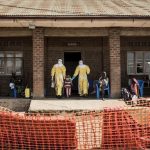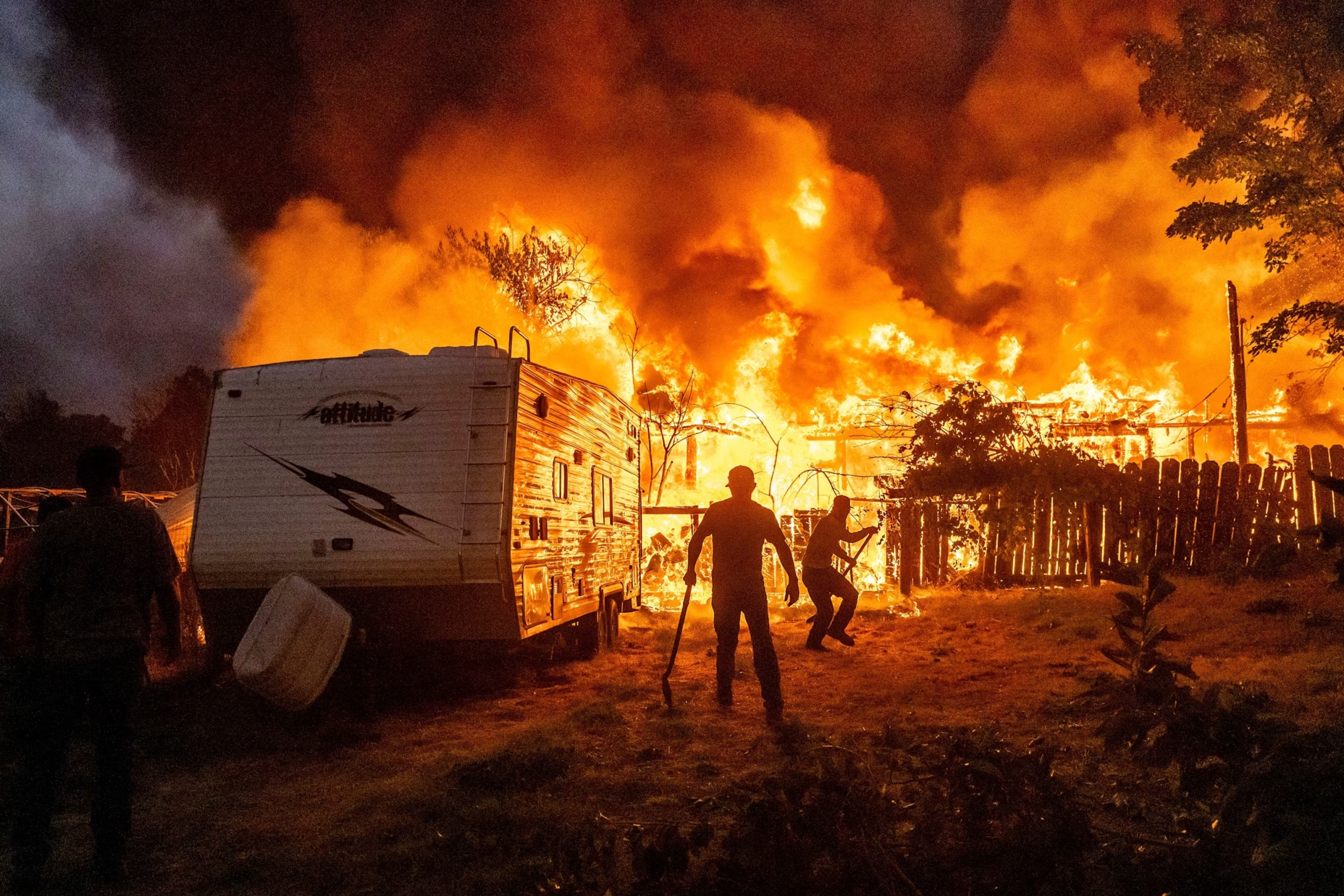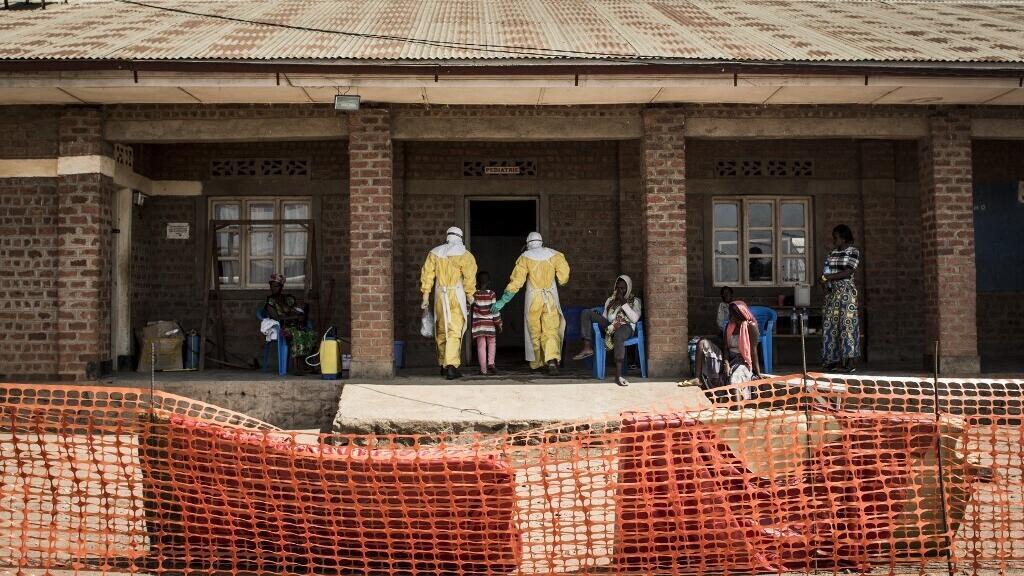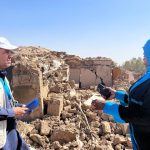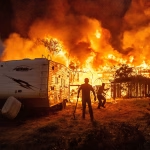In the heart of California’s Sierra Nevada foothills, the historic town of Chinese Camp—once a bustling hub during the Gold Rush era—has been ravaged by a rapidly spreading wildfire. This town, founded in the mid-1800s by Chinese miners who faced discrimination elsewhere, has long stood as a testament to resilience and cultural heritage. Recent events, however, have threatened to erase much of its rich history, leaving residents and historians alike in shock.
- The Origins of the Blaze: Lightning Strikes and Dry Conditions
- Impact on Chinese Camp: A Community in Peril
- Firefighting Efforts: A Race Against Time
- The Broader Context: A State in Crisis
- Preserving History Amidst the Flames
- Looking Ahead: Rebuilding and Resilience
- FAQs
- What caused the wildfire in Chinese Camp?
- How many acres have been burned in the TCU September Lightning Complex?
- What historic structures were affected by the fire in Chinese Camp?
- How many residents were evacuated from Chinese Camp?
- What is being done to preserve the history of Chinese Camp?
- Conclusion
The Origins of the Blaze: Lightning Strikes and Dry Conditions
The wildfire, part of the TCU September Lightning Complex, was ignited by a series of dry lightning storms that struck Northern California in early September 2025. These storms brought tens of thousands of lightning strikes across the region, worsening already dangerous fire conditions. Combined with high temperatures, low humidity, and gusty winds, the environment became perfect for a wildfire to spread rapidly. By September 3, the fire had scorched more than 13,700 acres, and containment efforts were still in the early stages, leaving communities on high alert.
Impact on Chinese Camp: A Community in Peril
Chinese Camp, designated a California Historical Landmark in 1949, was founded in 1849 by Chinese miners displaced from nearby camps during the Gold Rush. The town is home to several historic structures, including an 1854 post office and a Catholic church built in 1855. As the wildfire approached, mandatory evacuations were ordered, forcing around 100 residents to flee. At least five homes were destroyed, and while some historic buildings, such as the church, appear to have survived, the full extent of damage remains under assessment. The fire has not only threatened physical structures but also the cultural and historical fabric of this unique community.
Firefighting Efforts: A Race Against Time
Over 600 firefighters were deployed to combat the blaze, working around the clock to protect lives and property. Fire crews employed a combination of aerial water drops and ground-based containment strategies. Despite their relentless efforts, the fire remained uncontained for several days, fueled by high temperatures, strong winds, and dry vegetation. Emergency responders faced the challenge of not just fighting the flames but also ensuring the safety of evacuated residents and minimizing damage to historical landmarks.
The Broader Context: A State in Crisis
The wildfire in Chinese Camp is part of a larger trend of devastating fires across California. In 2025 alone, the state has experienced thousands of wildfires, burning nearly half a million acres. Experts attribute the rising frequency and intensity of these fires to climate change, which has caused hotter temperatures, prolonged droughts, and more frequent lightning storms. The destruction of historic towns like Chinese Camp highlights the urgent need for better wildfire prevention strategies and stronger community preparedness across the state.
Preserving History Amidst the Flames
As the residents of Chinese Camp cope with the aftermath, efforts to preserve historical landmarks have become a priority. Local historians and preservationists are working alongside emergency responders to assess damage and salvage artifacts from affected buildings. These efforts are crucial to ensuring that, even in the face of natural disasters, the legacy of Chinese Camp and its significance in Gold Rush history are not lost to future generations.
Looking Ahead: Rebuilding and Resilience
The road to recovery for Chinese Camp will be long and challenging. The community’s history of resilience offers hope, however, and past experiences show that residents are determined to rebuild. With continued support from state and federal agencies, as well as dedicated efforts from local volunteers and historians, Chinese Camp can rise from the ashes. The reconstruction will not only restore homes and infrastructure but also preserve the town’s cultural identity and historical significance.
FAQs
What caused the wildfire in Chinese Camp?
The wildfire was ignited by a series of dry lightning storms that struck Northern California in early September 2025. These storms created highly flammable conditions that allowed the fire to spread rapidly.
How many acres have been burned in the TCU September Lightning Complex?
As of early September 2025, the TCU September Lightning Complex had burned more than 13,700 acres across Tuolumne and Calaveras counties, with containment still in progress.
What historic structures were affected by the fire in Chinese Camp?
Historic structures affected include the 1854 post office and a Catholic church built in 1855. While some buildings have survived, the full scope of damage is still being evaluated.
How many residents were evacuated from Chinese Camp?
Approximately 100 residents were evacuated from Chinese Camp due to the wildfire, and at least five homes were destroyed.
What is being done to preserve the history of Chinese Camp?
Local historians and preservationists are working with emergency responders to catalog and protect remaining artifacts and structures, ensuring that the town’s historical legacy is preserved for future generations.
Conclusion
The wildfire that devastated Chinese Camp is a stark reminder of the growing threats posed by climate change and the vulnerability of historic communities. While the immediate damage is significant, the resilience and determination of the residents provide hope for recovery. With concerted efforts to rebuild and preserve historical landmarks, Chinese Camp can emerge from this crisis stronger, ensuring that its rich history continues to inspire and educate generations to come.






